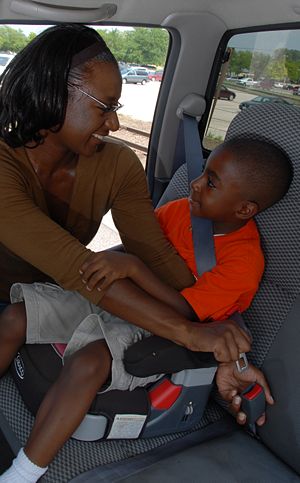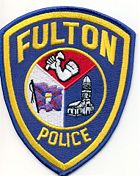905.2 Traffic Studies

905.2.1 Highway Capacity Analysis
According to the Highway Capacity Manual (HCM), the capacity of a facility is the maximum hourly rate that persons or vehicles can reasonably be expected to traverse a point or uniform section of a lane or roadway during a given time period under prevailing roadway, traffic and control conditions. The HCM provides methodologies for calculating capacity for
- urban streets
- signalized intersections
- unsignalized intersections
- pedestrians
- bicycles
- two-lane highways
- multilane highways
- freeway facilities
- basic freeway segments
- freeway weaving
- ramps and ramp junctions
- interchange ramp terminals and
- transit.
TMS has a highway capacity analysis tool.
905.2.2 Crash Analysis
A crash analysis is performed for a traffic study to determine whether a safety or operational problem exists. Crash information is obtained during the data collection phase of the traffic study. Crashes are reviewed for severity level of crashes as well as total number of crashes. A high number of crashes having no severe crashes typically indicates a location with high traffic volumes and a potential capacity or operational issue. A location with severe crashes should be reviewed for sight distance, signing, signal timing or other roadway features that may be leading to improper driver behavior. When performing a crash analysis, look for crash patterns that may lead to easily recognizable countermeasures. A collision diagram helps to identify crash patterns.
When calculating crash rates during the analysis, compare the calculated rate to the statewide rate. Typically, non-intersection studies are compared by roadway type. Comparisons by roadway type are a better indication of a roadway’s safety than comparisons by route designation. For instance, a rural county lettered route functions differently from Rte. D (Page Ave.) in St. Louis County. It is also important to compare routes by urban/rural classifications. For most routes, a crash rate is considered poor when it starts to reach double the statewide average.
| Additional Information |
| Crash Modification Factor (CMF) Clearinghouse presents proven countermeasures, the most important of which show up in the HSM |
905.2.3 Countermeasure Selection
The selection of countermeasures is covered in AASHTO's Highway Safety Manual and NCHRP 500 series. Both of these documents should be used as reference tools only. Any information contained in these documents is considered secondary to the EPG. Both of these guides start with identified problems and use charts to match potential solutions to the identified problems. These charts are comprehensive but are not the only solutions possible.

905.2.4 Human Factors of Roadway Safety
Human factors should be considered when conducting a traffic study. Keep in mind the following factors of the traveler:
- Age, that is the needs of older or younger drivers
- Cone of vision
- Placement of traffic control devices
- Legibility, especially the size and font of lettering
- Perception-reaction time
- Driver overload, that is, too much information too quickly for a driver to reasonably understand
- The number of lines of legend
- Advance placement of signing/delineation
- Sign spacing
- Effect of colors
- Device visibility and
- Driver expectations.
905.2.5 Highway Signing
When reviewing highway signing, refer to EPG 903 Highway Signing.
905.2.6 Temporary Traffic Control Devices
When reviewing temporary traffic control devices, refer to EPG 616 Temporary Traffic Control.
905.2.7 Pavement Marking
When reviewing pavement marking, refer to EPG 620 Pavement Marking.
905.2.8 Traffic Signals
When reviewing traffic signals, refer to EPG 902 Signals.
905.2.9 Traffic Control in School Areas
When reviewing traffic control in school areas, refer to EPG 902.11 Traffic Control for Schools. Another source of information involving traffic and pedestrian operations in school areas is the manual School Transportation & Traffic Safety – Guidebook for Local Agencies that was published for local agencies in 1996 using TTAP funds. Any information from the guidebook is secondary to the EPG.
905.2.10 Pedestrian and Bicycle Facilities
Pedestrian and bicycle facilities should be considered on every project. When reviewing pedestrian facilities, refer to EPG 642 Pedestrian Facilities and EPG 641 Bicycle Facilities when reviewing bicycle use and facilities.
905.2.11 Law Enforcement
 |
 |
 |
Law enforcement at a location can reduce the number and severity of crashes, provide orderly flow of traffic and detect offenders of traffic violations. When considering law enforcement as a countermeasure, several options are available including contacting Highway Safety and Traffic or the regional Blueprint representative, the local law enforcement agency direct or consider automated enforcement options. Crashes that do not have a direct engineering solution should not be disregarded. Highway Safety and Traffic provides law enforcement agencies contracts to enforce hazardous moving violations and driving under the influence of alcohol violations. Law enforcement should also be considered for work zones. Refer to EPG 616.16 Law Enforcement Services when considering law enforcement in work zones.
905.2.12 Traffic Calming
When drivers are not behaving as intended on a route, traffic calming solutions should be considered. The Traffic Safety Toolbox, ITE publication, 1999 edition states, “Traffic calming is the combination of mainly physical measures that reduce the negative impacts of motor vehicle use, alter driver behavior and improve conditions for non-motorized street users.” Techniques to consider for traffic calming include:
- road closures and diverters
- horizontal deflections and
- vertical deflections.
Other considerations when reviewing options for traffic calming include
- maintenance
- public perception
- emergency response
- spacing of calming devices
- residents’ mobility
- effects to pedestrians/bicyclists
- relocation of problems
- noise
- crash rates and
- enforcement.
905.2.13 Voiding City Ordinances on State Routes with Inappropriate Speed Limits

Missouri Revised Statute 304.010 contains the state laws pertaining to speed limits on Missouri’s roadways. Paragraphs 3 and 4 address speed limits on state routes and state:
- 3. On any state road or highway where the speed limit is not set pursuant to a local ordinance, the highways and transportation commission may set a speed limit higher or lower than the uniform maximum speed limit provided in subsection 2 of this section, if a higher or lower speed limit is recommended by the department of transportation. The department of public safety, where it believes for safety reasons, or to expedite the flow of traffic a higher or lower speed limit is warranted, may request the department of transportation to raise or lower such speed limit, except that no speed limit shall be set higher than seventy miles per hour.
- 4. Notwithstanding the provisions of section 304.120 or any other provision of law to the contrary, cities, towns and villages may regulate the speed of vehicles on state roads and highways within such cities', towns' or villages' corporate limits by ordinance with the approval of the state highways and transportation commission. Any reduction of speed in cities, towns or villages shall be designed to expedite the flow of traffic on such state roads and highways to the extent consistent with public safety. The commission may declare any ordinance void if it finds that such ordinance is:
- (1) Not primarily designed to expedite traffic flow; and
- (2) Primarily designed to produce revenue for the city, town or village which enacted such ordinance.
- If an ordinance is declared void, the city, town or village shall have any future proposed ordinance approved by the highways and transportation commission before such ordinance may take effect.
If a District Engineer believes that a city, village or town has passed an ordinance establishing an inappropriate speed limit, the District Engineer shall ensure the following actions are taken:
- 1. Advise the city that a study will be made to determine the appropriate speed limit in the area.
- 2. If a speed limit ordinance is found to be inappropriate as determined by a traffic engineering study and is determined to be for the purpose of producing revenue, a letter shall be sent to the city advising that their speed limit appears inappropriate and request a meeting with the city to discuss the matter.
- 3. If a consensus cannot be obtained between the department and the city, the city would be notified of the date that the department’s recommendation will be presented to the Missouri Highways and Transportation Commission.
- 4. If the Commission determines that the city speed limit is not correct as presently posted, the city shall be asked to adjust to the proper speed limit as determined by the Commission. If the city does not comply, the city speed limit ordinance will be declared void and posted as determined by the Commission.
- 5. The city will then be notified of the Commission action and advised that all enforcement must be adjudicated through state courts unless the city passes and ordinance specifying the speed limit is the same as has been posted.